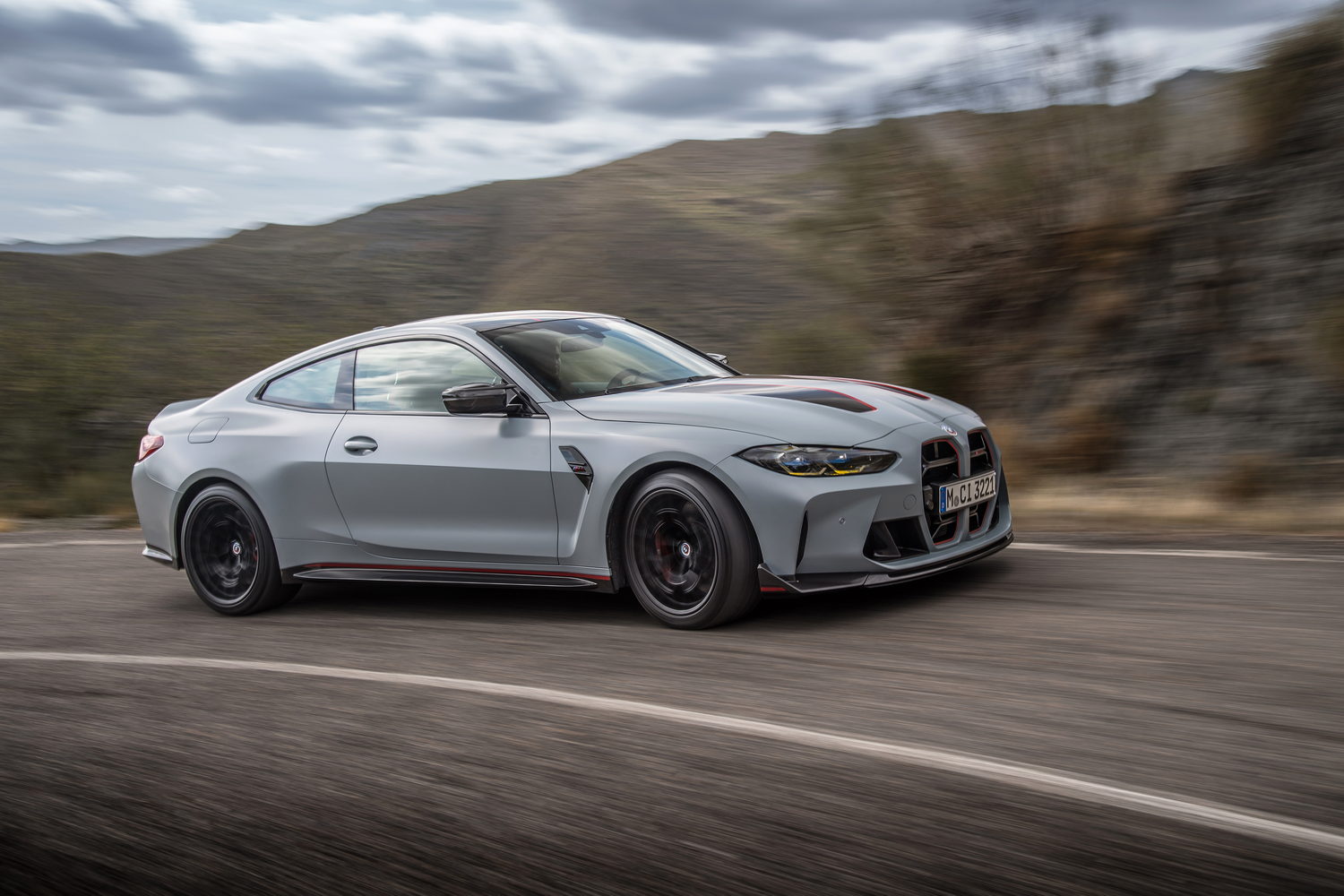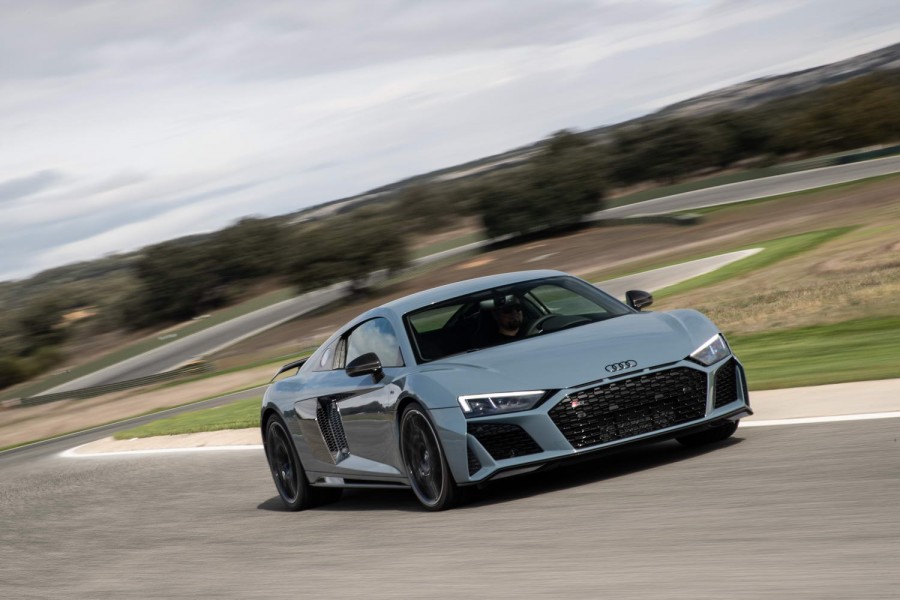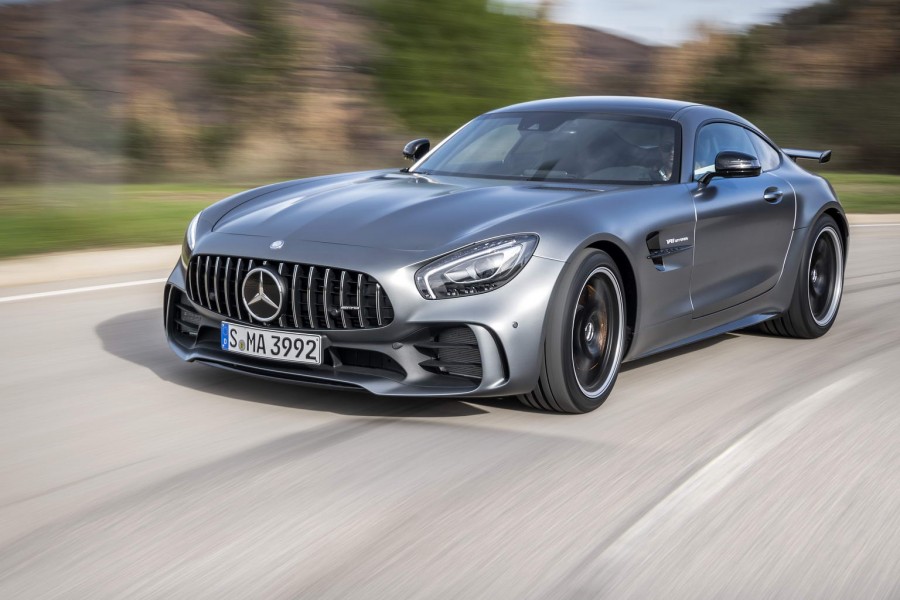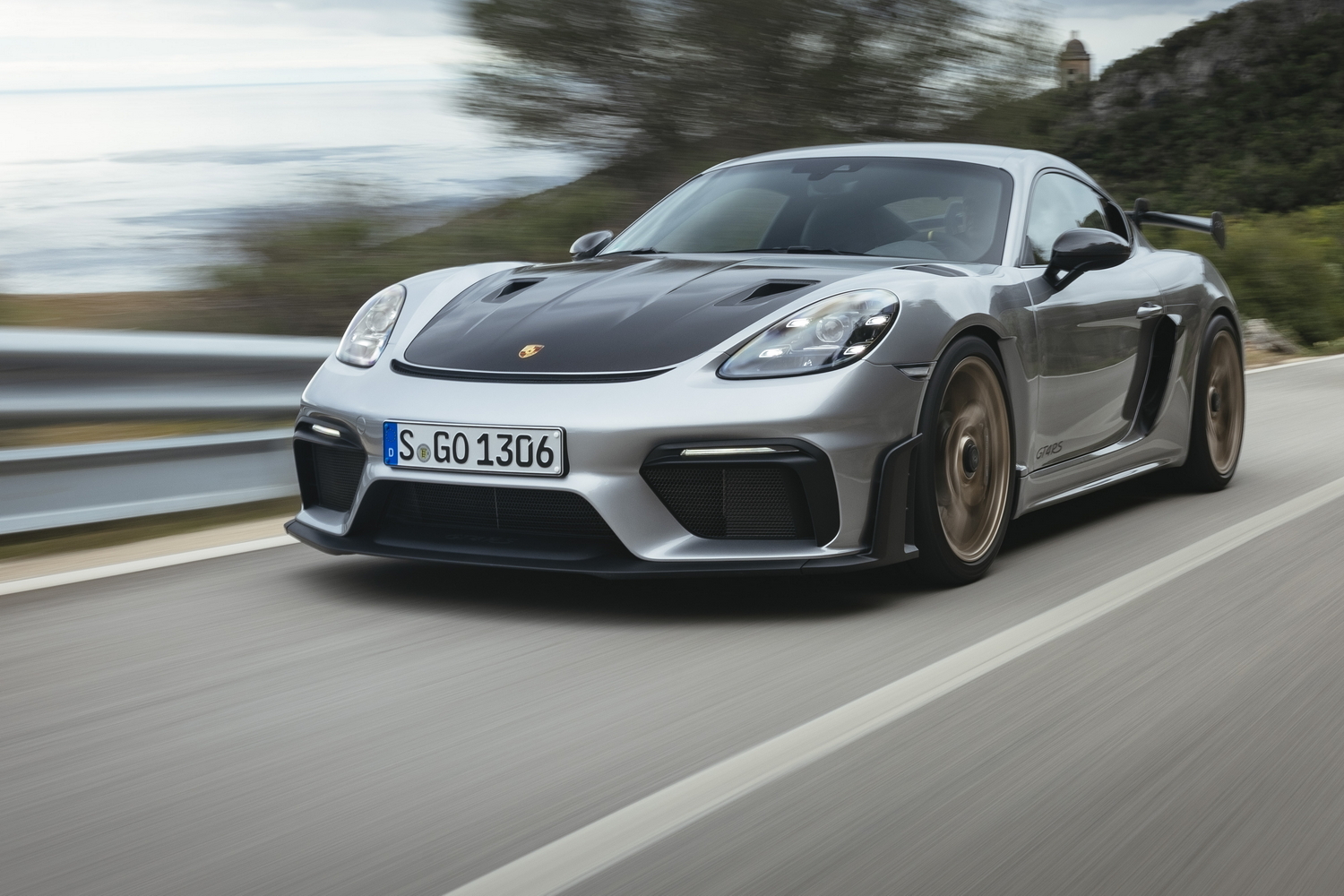The CSL badge is one that makes the hairs stand up on the back of BMW enthusiasts' necks. An acronym of Coupe, Sport and Lightweight, it's a name reserved for the Bavarian brand's most driver-focused two-door sports cars. And now, as the M division turns 50, there's a new one. Based on the existing M4, the new car has a stripped-out cabin, more power and sharpened handling, but is that enough to make it worthy of the CSL name? And will it be worth the gigantic asking price?
In the metal
To the casual observer, the CSL looks much like the standard BMW M4 Competition, albeit with a little garnish. And while it's true that BMW has done little with the basic shape, plenty of engineering expertise has been invested in this car.
From the outside, you can see the red trim in the grille and the front aero features, while there are red decals punctuating the bodywork, too. There's exposed carbon-fibre, as well, displaying BMW's efforts to justify the 'L' in the car's name. Carbon-fibre-reinforced plastic, or CFRP, was already in use in the M4 Competition's roof, but the CSL adds a CFRP bonnet to the mix, saving a few kilos, while the boot - complete with its more pronounced spoiler - is also made from CFRP.
At the back, a set of titanium exhaust tips protrude from the rear bumper, showcasing another weight-saving measure, while lighter carbon-ceramic brakes are barely hidden by the lightweight wheels. It all sounds great, but the truth is BMW has not obsessed about lightening the load on the M4 as much as you might think.
That's because stripping out a car is essentially a simple case of removing anything you can do without - especially if it's heavy. So BMW has removed the back seats, fitting an enormous parcel shelf in their place, and the centre console arm rest has gone. As have the M4's front seats, although they have been replaced with lightweight, carbon-shelled bucket seats with fixed back rests and height adjustment that comes courtesy of a spanner. So far, so good, but BMW has neglected to pick the low-hanging fruit and left the touchscreen infotainment system, digital instrument cluster, navigation and two-zone climate control in place.
As a result, the CSL weighs just 100kg less than the standard M4 Competition, and our test car was a little heavier than that. Because seats that don't adjust easily are annoying, the vehicle we drove came with electrically adjustable seats that weigh a few kg more, so the difference was more like 85kg compared with a standard M4 Competition. For context, you could achieve a similar weight saving by chucking your passenger out at the next convenient moment.
So while the CSL is more CS than L, there is something to be said for all this. Because while practicality may have suffered as a result of the weight-shedding, quality has not. Sure, there's lots of race-spec Alcantara where once there was leather, and there's a plethora of red CSL-themed styling upgrades, but the build quality that has made BMWs so brilliant over the years remains in evidence here.
As does the boot space that makes the M4 Competition Coupe a useful road car. The CSL still has 440 litres of luggage space, and the removal of the back seats has freed up even more carrying capacity if needs be. Yes, you lose the ability to put people in the back, but with the lack of headroom in the back of an M4, those seats were only really fit for children anyway.
Driving it
With a kerb weight of just over 1.6 tonnes, and a slightly half-hearted approach to reducing the weight of the M4, the CSL doesn't feel quite as light as we were expecting. Instead, it simply feels sharper and more focused than the car on which it's based, with the aim of improving lap times on a track.
That's partly down to the fact BMW hasn't just attempted to lighten the M4, but also tried to make it more engaging to drive. Tweaks to the suspension, for example, are designed to make the car sit 8mm lower than a standard M4 Competition, while there's bespoke logic for the gearbox and a retuned traction control system that comes with special settings that are apparently "geared towards optimising traction to deliver quick lap times."
But the headline upgrade is found under the bonnet. There, buyers will not only find a strut brace designed to improve vehicle stiffness, but also an upgraded version of the 3.0-litre straight-six petrol engine already seen in the M4 Competition. All sorts of upgrades have been fitted, including tweaks to the oil system and firmer engine mounts, and there's now an extra 40hp to play with. That means maximum power output is now 550hp, all of which is fed to the rear wheels via the eight-speed automatic gearbox. The sprint to 100km/h takes 3.7 seconds - a 0.2-second improvement on the M4 Competition - while the (admittedly irrelevant) top speed has risen to more than 305km/h.
As with the standard M4, though, the way the CSL operates depends largely on which settings the driver has selected. There's an M menu in the touchscreen that allows the driver to tweak various aspects of the vehicle, from the steering to the brake feel and from the damping response to the ferocity of the gear shifts. And there's a button that allows the exhaust to make a more appealing growl. In truth, most are likely to leave that button firmly switched on, because it gives the car a bit more menace and intent. That said, having the ability to switch it off when you've got an early start and the neighbours are all tucked up in bed will probably earn you some goodwill in your local community.
But drivers will probably want to play with the other settings a little bit more. The brakes and the steering are the most clear-cut of the two, because the sportier settings give them some welcome feel, weight and responsiveness that's slightly less pronounced in the less focused settings. Picking a level for the suspension and engine, meanwhile, will be more dependent on personal preference and the prevailing road conditions.
The suspension doesn't change drastically as you climb through the Sport and Sport Plus settings, but the Comfort mode is, predictably, the softest option of the three. It's still very, very firm, though, and at low speeds it's arguably too stiff for everyday use, but it does give the car the best flow at higher road speeds and while it's borderline unacceptable around town, it's fine on the motorway. The Sport and Sport Plus settings each add a little extra firmness, which is even more unpleasant at low speed, but the advantage is a little extra body control and a sensation that the car feels more eager to follow its wheels when you turn into a corner.
Not that the CSL doesn't turn in keenly in softer settings. The M4 Competition is fundamentally great to drive, and the CSL builds on that. The steering is smooth and offers just enough feedback - particularly in Sport mode - while the car has a glorious sense of balance that makes it feel as though it's pivoting around the hips that are squeezed between the hard bolsters of the seats. And even though this car doesn't have the xDrive all-wheel-drive system that's available on the M4 Competition, there's a huge amount of traction courtesy of the clever electronically controlled rear differential.
But the car doesn't really come alive until you put the engine into one of its sportier settings. Yes, it has a bit of menace and intent at any time, but the six-cylinder engine is smoother than you might imagine, particularly at a cruise. Pop it into Sport mode and it gets really rorty, popping and banging as you change gear and growling through those four exhaust tips.
It helps to give the car a more visceral feel, but there was plenty of that already. Because the CSL has lightweight sound insulation it's nowhere near as good as the M4 Competition at keeping the outside world at bay. The massive Michelin Pilot Sport 4S tyres may be brilliantly sticky, but they make plenty of noise on the move, too. And it feels as though you can hear every speck of bitumen flattening itself against the underside of the car.
All of which means the M4 CSL is not an especially brilliant grand tourer, but it's a hoot on a track. There you can play with the trick traction control in a more controlled environment, and it's the only place where you can really explore the limits of the CSL. Nonetheless, on the road, for driver engagement and involvement on a Sunday morning blast, few cars this side of a supercar come close. The only problem is the same is true of the standard M4 Competition.
What you get for your money
You can't buy a new M4 CSL anymore, because all 1,000 have already been sold, so the price is a little academic in a way. That said, with an asking price of €229,870, the question of value remains for anyone who has placed their order. Given the CSL trades refinement for speed, whether that represents value will mainly come down to your preferences and whether you want something exclusive. Just 100 right-hand-drive examples will be shared between the UK and Ireland, so it certainly has that on its side. But remember, this is a car that costs about €10,000 more than a Porsche 718 Cayman GT4 RS, and that's an even lighter, even faster and even more raucous car.
Summary
Perhaps it's unfair to expect a car to be such a significant improvement on the M4 Competition - a car that's already brilliant to drive - but the CSL doesn't feel as spectacular as we were hoping. Of course, it's a stunning car to drive fast, and we can forgive the lack of refinement and luxury in exchange for that extra focus. But we can't forgive the 1.6-tonne weight, which prevents this from feeling like a true lightweight, and nor can we forgive the price tag. A €230,000 M4 is hardly a value proposition, and while the CSL is brilliant, it isn't quite brilliant enough to justify the extra outlay.








































